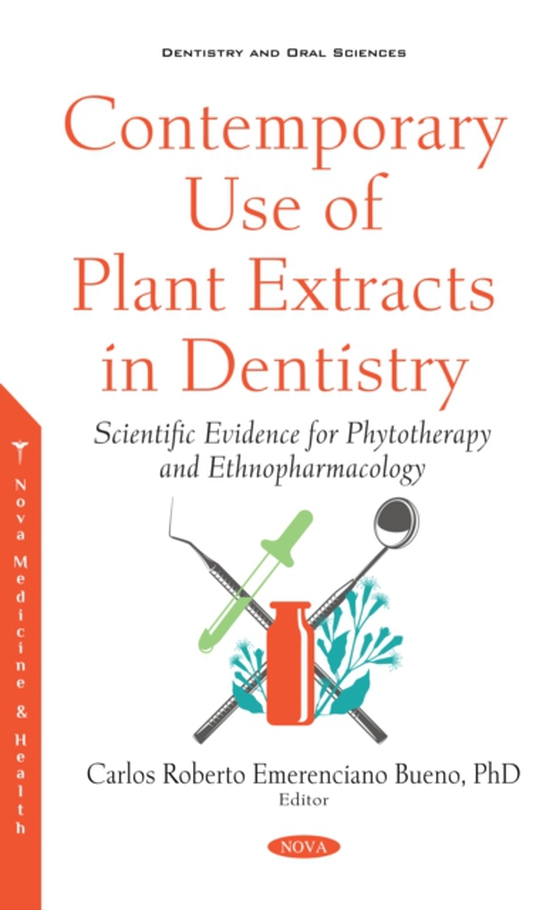
Contemporary Use of Plant Extracts in Dentistry: Scientific Evidence for Phytotherapy and Ethnopharmacology e-bog
2190,77 DKK
(inkl. moms 2738,46 DKK)
Since ancient times, mankind has used plants as a valuable source of natural products for maintaining human health and to treat or prevent diseases. The common knowledge around plants' healing properties, known as folk medicine, has been transmitted over the centuries for generations throughout human communities. The use of natural products and herbal medicines have been documented in the past....
E-bog
2190,77 DKK
Forlag
Nova Medicine and Health
Udgivet
7 maj 2020
Længde
288 sider
Genrer
MMD
Sprog
English
Format
pdf
Beskyttelse
LCP
ISBN
9781536176513
Since ancient times, mankind has used plants as a valuable source of natural products for maintaining human health and to treat or prevent diseases. The common knowledge around plants' healing properties, known as folk medicine, has been transmitted over the centuries for generations throughout human communities. The use of natural products and herbal medicines have been documented in the past. The antibacterial activity of plant extracts has been reported since the late 1800s and some of these traditional medicines are still used, especially in the last decade, with more intensive studies for natural therapies. Active compounds produced during vegetal metabolism are responsible for the antimicrobial and biological properties interacting with specific chemical receptors in the human body and, due to these components, plants extracts are popular as anti-inflammatory, anti-bacterial or anti-fungal drugs. However, in the absence of scientific studies, the use of aleatory plant extracts may lead to harmful adverse effects. Previously considered empirical, current data on the antimicrobial activity and biocompatibility of numerous plants have been scientifically confirmed. Phytosciences, as ethnopharmacology or phytotherapy, are emerging multidisciplinary areas with almost unlimited sources and several aspects to be discussed. Recently, there has been a growing trend to seek natural drugs as part of dental treatment. In dentistry, the association of plant extracts with restorative dentistry, endodontics or periodontics materials have been used to reduce inflammation, as antimicrobial enhancer agent, antiseptics, antifungals, antioxidants, analgesics or even as mouth rinse to prevent or reduce dental plaque. Thus, this book will address the use of plant extracts in different fields of dentistry, highlighting its use in cariology, restorative dentistry, endodontics and periodontics, besides other uses of herbal plants in dentistry, as in dental trauma, osteointegration or hemostatic, among others. As will be shown and stated, the vast variety of different plants described in literature with medicinal properties makes it impracticable to discuss all extracts found in scientific literature. Therefore, this book will contribute with some of these extracts and different methodologies to assess, as an introduction to new research and new researchers. Also, different in vivo and in vitro tests used to evaluate biological response, such as biocompatibility and antimicrobial activity in dental treatment will be discussed.
 Dansk
Dansk

